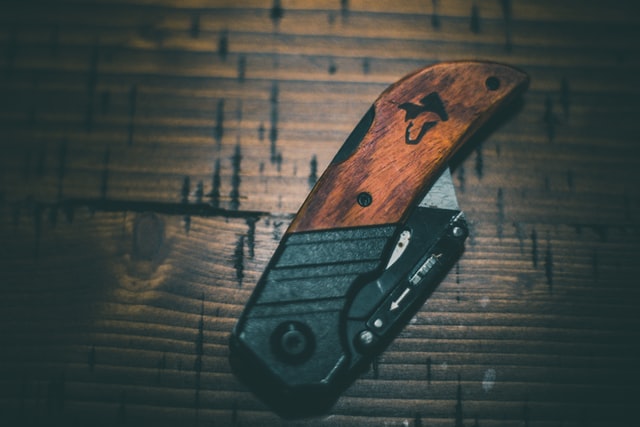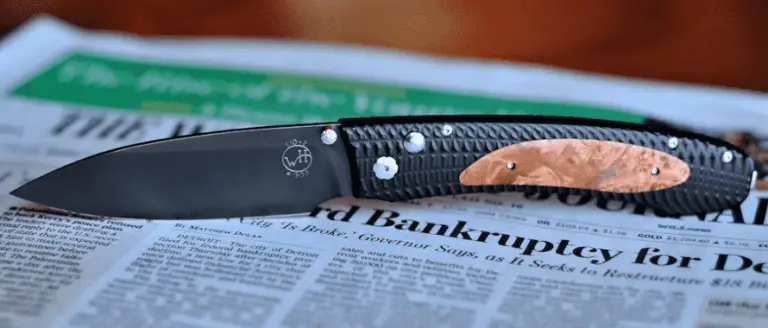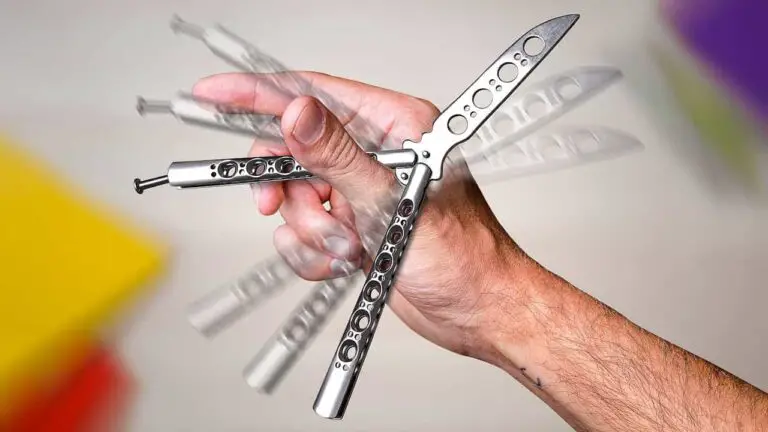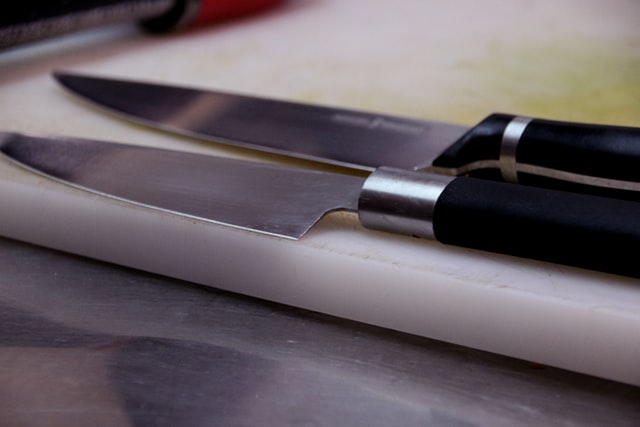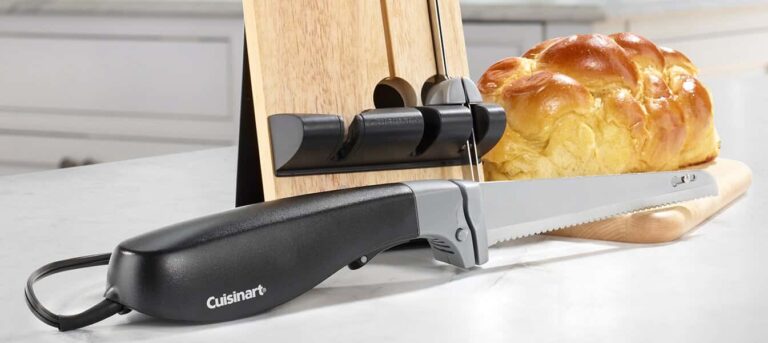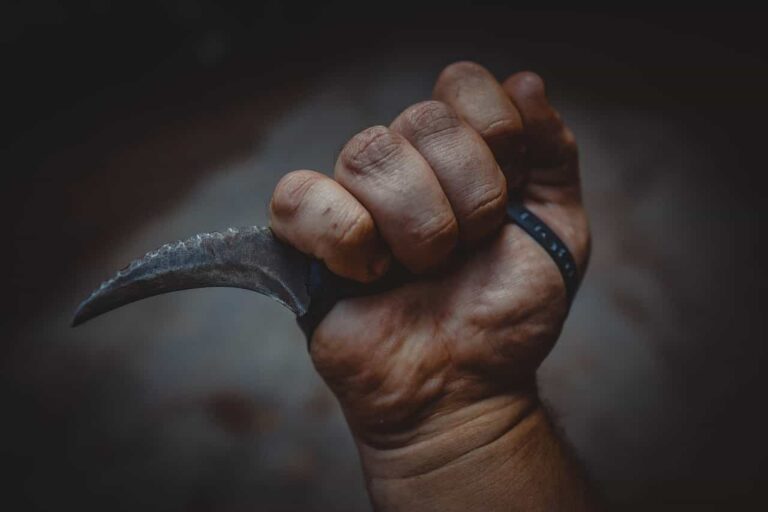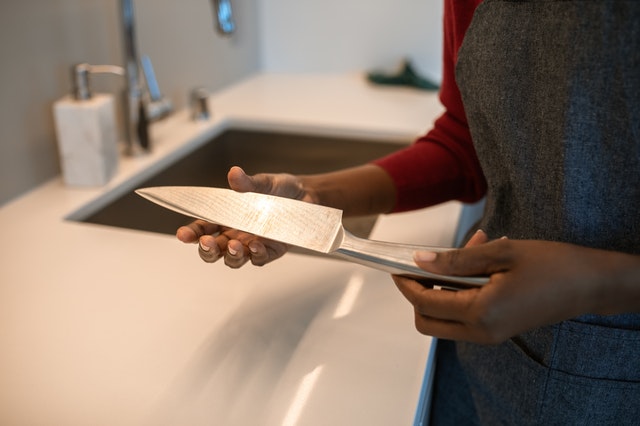Some things will humble you:
Trying to take anything out of a baby’s fist, thinking you can make a golf hole easily, or trying to close a pocket knife.
Trust me, it looks like there is no fuss there but you need to know how to close the different kinds of pocket knives that might come your way.
Don’t worry. Your favorite knife guy is here.
You have been looking for everything on how to close a pocket knife of different styles, types, and dimensions – and I bring you just that today.
Before we get into the post proper…
Table of Contents
The Different Locking Mechanisms to Know
I think that the reason why most people find it hard to close a pocket knife is that they don’t understand the locking mechanism behind it.
Not all pocket knives come the same, as you would see on this knife identification chart.
They don’t only differ in their blade types and designs, but also in the locking mechanisms that come with them.
The most popular ones are defined below.
Zero Lock/ Slip Joint
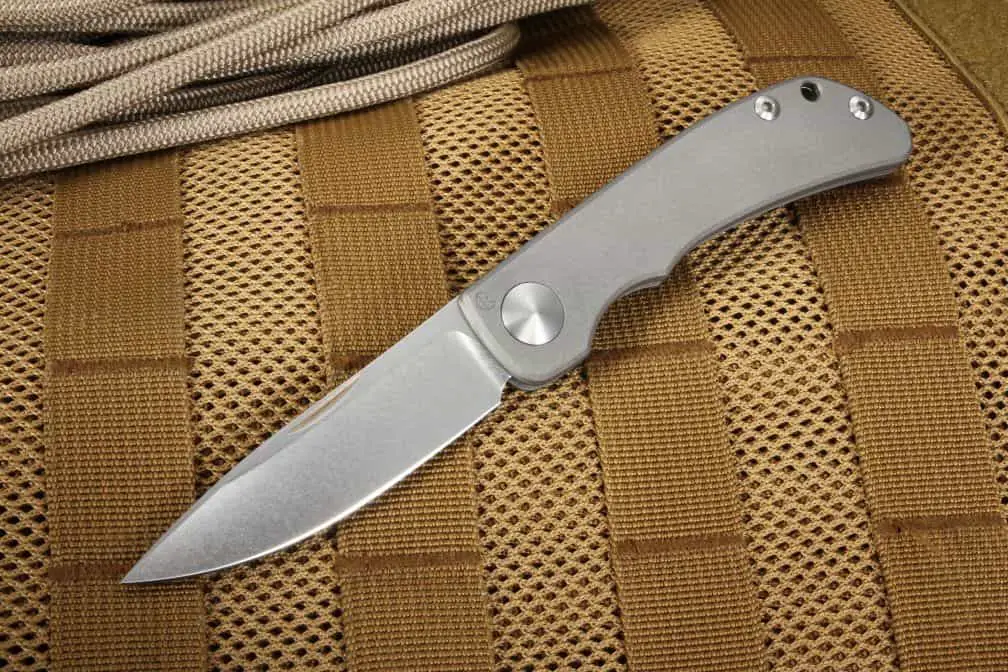
Some pocket knives don’t have any locking mechanism on them at all. They are easier to open and close, but they might not be the best bet for heavy-duty.
Not that any pocket knife is designed for heavy-duty, but you know what I mean already.
They are also called the slip joint since any form of pressure gets them back into the frame easily.
Frame Lock

As the name implies, the frame lock type of pocket knife has a locking mechanism that engages when you push the blade all out.
This lock knife makes it easier to use your blade without fear of it retracting into the shell or working flimsily.
Liner Lock

Don’t mistake a liner lock knife for the frame lock.
Here, there is an extra mechanism on the inside that keeps the blade open when in use.
Button Lock
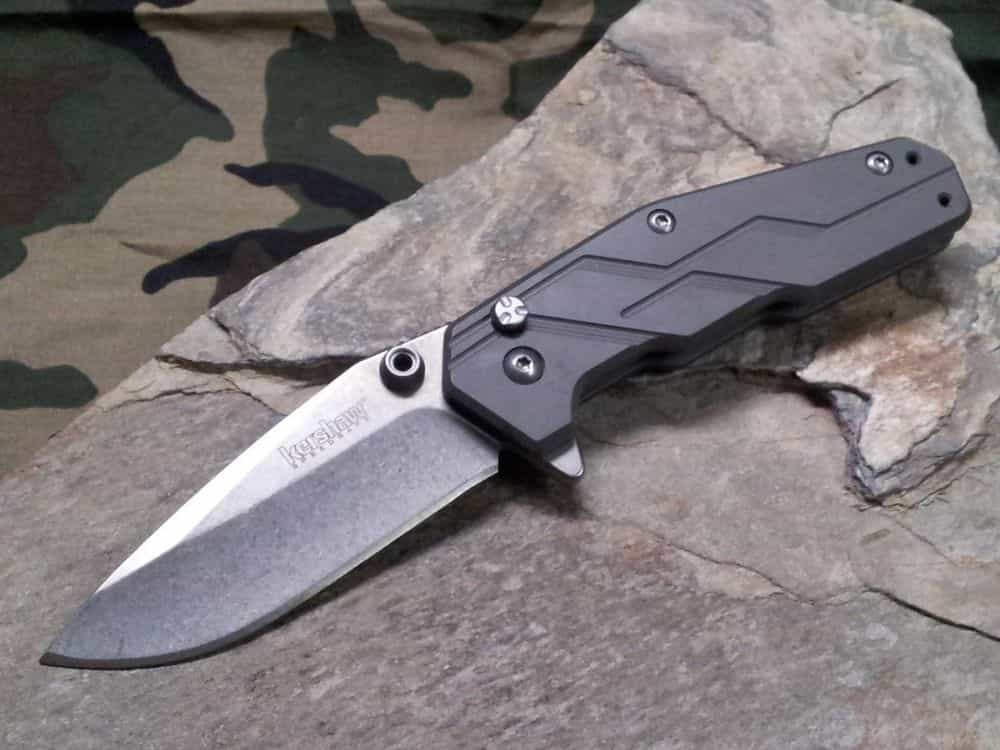
If there was an automatic vehicle and stick gear-style pocket knife, this one would be the automatic option.
The button lock knives, as the name implies, come with buttons on the knife handle to keep the knife open or get it back to the closed position.
Axis Lock
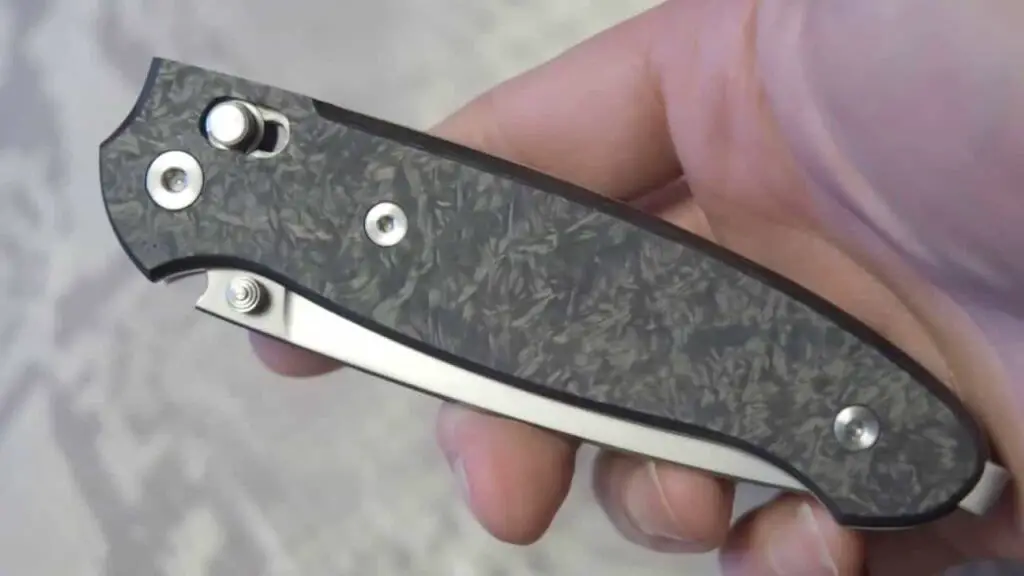
I could call this another kind of button lock, but I would get a lot of stick for that.
I think the best way to explain the axis lock is with the U-shaped spring inside the knife’s handle, designed to secure the blade in place when open or closed.
Lockback
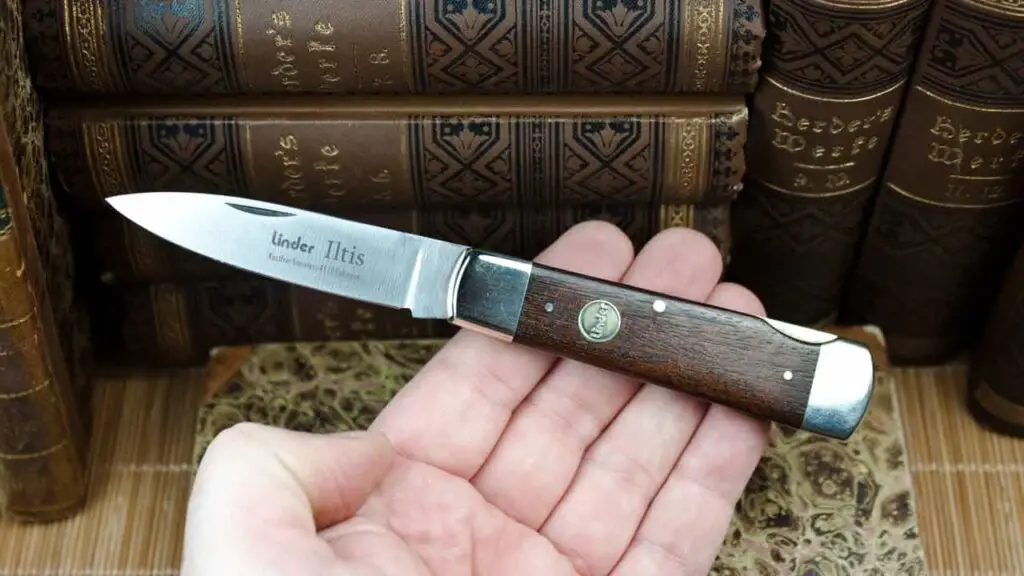
The lockback is the type of lock fitted with an extra spine (usually made of metal) running along the side of the handle to keep the knife locked into place when fully opened.
Closing your Pocket Knife
Now that you know the different kinds of locking mechanisms and what they look like, it is easier to discuss how to close a pocket knife of any kind without confusion.
Let’s get to it, then.
Closing a Zero Lock/ Slip Joint
Here’s how to close a knife with the slip joint properly.
- Step #1 – hold the knife by the handle
- Step #2 – point the sharp edge of the knife away from your body.
- Step #3 – grab the back of the blade with your free hand. Your thumb and the rest of your fingers should do, depending on the strength of the knife pivot.
- Step #4 – gently push behind the blade with your thumb back towards you, such that it moves to enter the open space in the handle.
- Step #5 – close the knife off by slowly securing the blade into the handle.
Your favorite movie heroes might do this with one hand, but I recommend practicing with two hands till you’re comfortable with the knife.
Closing a Frame Lock
If you’ve got the frame lock knife on your hands, this is the method to employ.
- Step #1 – find the locking system in play here. Since the frame locks on the outside of the knife, you should be able to see the external protrusion keeping the blade in place.
- Step #2 – with your thumb, push this frame lock out of the way of the blade
- Step #3 – hold the knife behind the blade as above, combining your thumb and fingers to have the blade in a firm grip.
- Step #4 – push the blade all the way till it comes back to the closed position.
Closing a Liner Lock
The liner lock can be closed in a similar method to the frame lock. This time, though, we are not pushing anything aside since the locking button is not on the body of the knife. Here’s what we do instead.
- Step #1 – hold the knife in your palm with the same grip like you were about to use it. As usual, the blade should be pointing away from your body.
- Step #2 – look at the inner frame (at the handle part) to find the liner locking mechanism. This is usually at the top of most pocket knife handles, but it can be at the bottom (or both) on yours.
- Step #3 – while still holding the knife as above, use your other hand to press the liner locking button away.
- Step #4 – done right, you instantly feel less tension in the pocket knife. This is from the joint having been loosened from the locked position.
- Step #5 – safely push the blade back towards your body till you close the knife properly.
Closing a Lockback
The trick here is to release the spring tension in the knife – and doing that is not hard at all.
Here’s how to get this knife closed.
- Step #1 – hold the knife away from you. This time, start by pointing the sharp edge downwards.
- Step #2 – while holding the knife, check the spine (very close to the handle) for a built-in lock/ unlock system.
- Step #3 – press down on that part of the back of the blade and you should feel the lock disengage.
- Step #4 – turn your knife the other way around. This time, the sharp edge faces you and the spine faces the floor.
- Step #5 – either with your palm or some fingers, fold the knife back into the handle.
Closing a Button Lock
You would love this one.
If I had my way, all pocket knives would come with a button lock only. But then, what the fun in that?
Do these to close this kind of pocket knife:
- Step #1 – hold the knife with the blade pointing away from you, but sideways.
- Step #2 – identify buttons on the side of the pocket knife. This should be easy. The manufacturer is not trying to hide it.
- Step #3 – push down on the button with the thumb on the hand you are holding the knife with, or another finger.
- Step #4 – at this stage, you should feel the spring mechanism keeping the blade open releasing.
- Step #5 – fold the knife back into the handle
Closing an Axis Lock
Remember when I said that this is also a form of button lock? It also uses a spring mechanism, but the applications are different.
- Step #1 – in the normal position as before, hold your folding knife away from your body.
- Step #2 – press on the button-like mechanism that you find on the side of the handle, and pull it down
- Step #3 – on some pocket knives, the step above disengages the spring so much that the knife falls freely. On other knives, you still have to pull the blade in by yourself
- Step #4 – still holding the knife and the button, close the pocket knife.
- Step #5 – fully close your pocket knife by releasing the button so that the blade is locked in place. Otherwise, it can still slide out easily.
General Tips for Closing your Folding Knives
These tips can help you close your knives better, faster and safer.
Don’t rush the process
Especially if it is your first time.
Respect your knife and you won’t have any reason to break out the first aid box.
Know the type of pocket knife that you are dealing with too for the best results.
Use a hard surface
The parts of these methods that instruct you to fold back the knife with your thumb, fingers, or palm can be skipped if you have a hard surface around.
Say, a table, wall, concrete surface, etc, and you are good to go.
As long as the lock has been disengaged, you can use such hard surfaces to push the back of the blade back into the closing position.
Practice
Once you get your pocket knife, practice with it multiple times.
If you have different types of pocket knives, know how to open and close each one. Practice with both hands first before moving to just one-hand movements, if you need to.
Final Words
And with that, you have everything you need to know on how to close a pocket knife safely.
From identifying the locking mechanisms to properly getting the blade back into the hilt, I’m sure I left no stone unturned.
Do let me know if there is anything I missed and I’ll be sure to add that. For you, of course.

